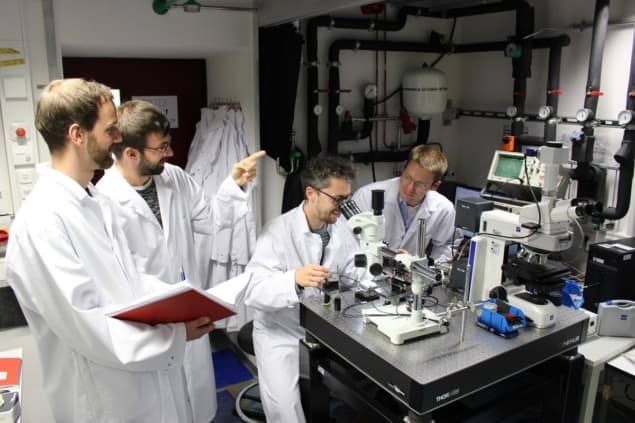
While the looming end of Moore’s law may pose a threat to increasing computation demands, the chances of achieving transistors with high integration and performance may be looking up. A research team led by Thomas Weitz at Ludwig-Maximilians University in Munich has recently developed a vertical organic field effect transistor (VOFET) with both high current and low power applications. The device, first reported in Nature Nanotechnology, is the first organic transistor capable of driving current densities in the MA cm-2 regime, which is critical for high performance electronics.
Towards high performance
Although organic transistors are gaining appeal due to their inherent flexibility and ease of large-scale processing, they suffer from low current densities in the range of only kA cm-2. To overcome this limitation, the researchers implemented a technique called electrolyte gating, where a droplet of electrolyte controls the charge carrier density in the semiconducting channel by supplying ions. Electrolyte gating is particularly useful as the scale of transistors shrink, since the electrolyte enhances the capacitance, which combats certain technological limitations such as short-channel effects.
The team also demonstrated that electrolyte gating allows their device to outperform other VOFETs by reducing susceptibility to heat-induced damage. While previous VOFETs have only sustained current densities above 1 kA cm-2 for a few milliseconds before deteriorating, the electrolyte gated device supports current densities on the order of MA cm-2 for nearly an hour without any decline in performance.
The design Weitz’s team use offers several other key advantages over existing organic transistors. In comparison to a lateral device made from identical materials, the vertical design showed significantly better performance and attained a channel length of just 40 nm without needing to rely on high resolution fabrication techniques.

Monolayer resets record for thinnest non-volatile memory device
“We were very much surprised that organic materials can perform so extremely well at such nanoscopic channel lengths and withstand these enormous current densities,” says Weitz, “Up to now [this type of] continuous operation could only be realized in inorganic materials.”
Neural networks and beyond
Whereas high performance electronics demand large currents, other applications like neural networks, or computing architectures inspired by the brain, are more invested in low-power. Neural networks often rely on tunable memory elements in order to mimic the adaptable connections between neurons that enable learning. To show that their device could also be used in this application, the team reduced their operation voltage to only 10 µV, and demonstrated that the transistor acted as a type of memory component called a memristor, with a switching energy only one order of magnitude larger than that of a biological neuron. Such versatile behaviour suggests that the team’s device offers a promising platform for dense, low-power artificial synapses, potentially extending the use of organic transistors into future neural networks.



